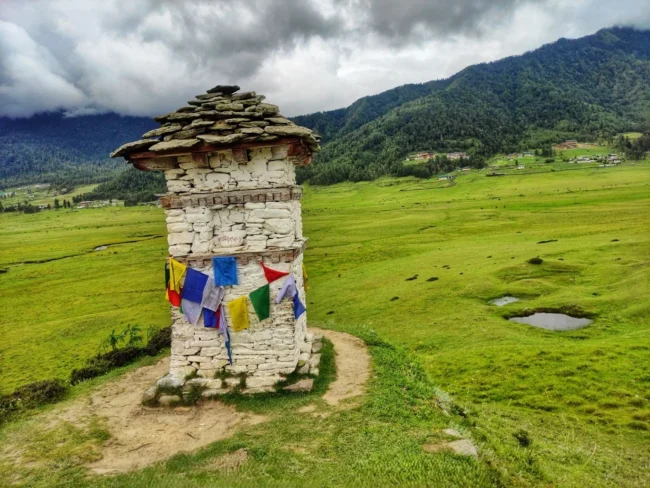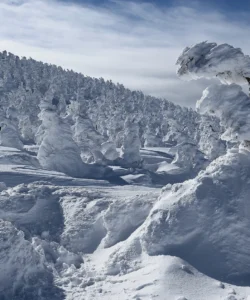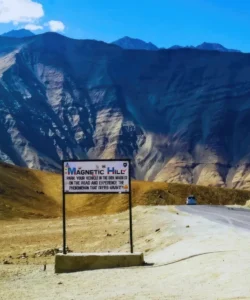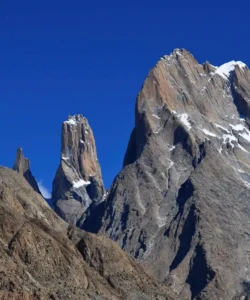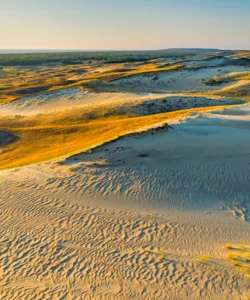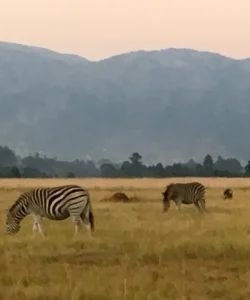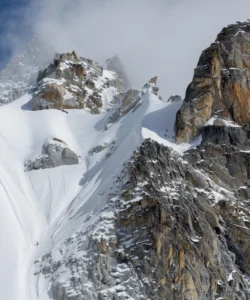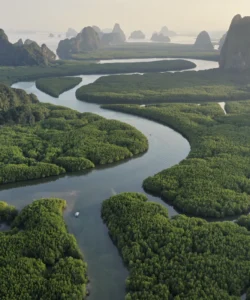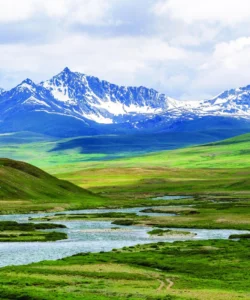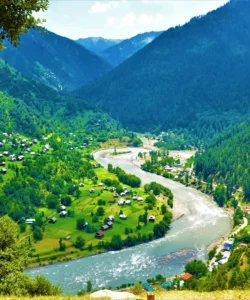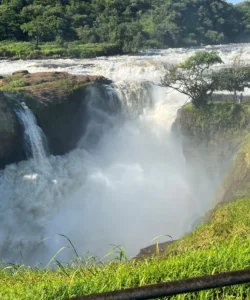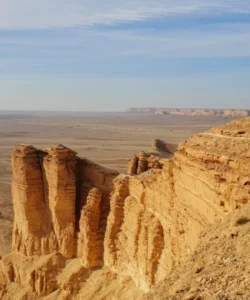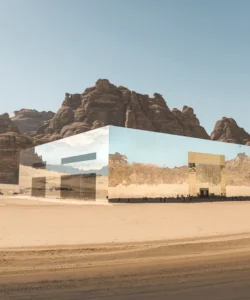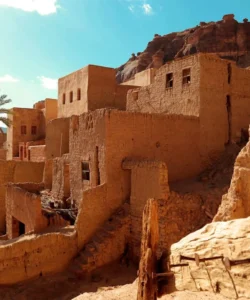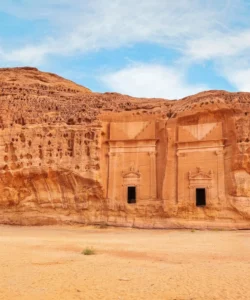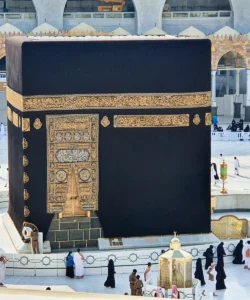Phobjikha Valley, often referred to as Gangtey Valley, is a breathtaking, bowl-shaped glacial valley nestled in the heart of Bhutan. It is a pristine and ecologically significant region, famous for its stunning natural beauty, traditional rural life, and its most renowned residents: the endangered Black-necked Cranes.
Name: Phobjikha Valley (Dzongkha: ཕོབ་སྦྱིས་ཁ་; also Gangtey Valley)
Address: Phobjikha Valley is located in the Wangdue Phodrang District of central Bhutan, nestled amidst the western slopes of the Black Mountains (part of the eastern Himalayas).
How to Get There:
As with all travel in Bhutan, foreign visitors (excluding citizens of India, Bangladesh, and the Maldives) must arrange their trip through a licensed Bhutanese tour operator, which includes all transportation.
- By Air to Paro (PBH): The most common entry point to Bhutan is Paro International Airport (PBH).
- From Paro to Phobjikha: The drive from Paro to Phobjikha Valley is approximately 143 kilometers (89 miles) and takes about 6-7 hours.
- From Thimphu to Phobjikha: From Thimphu, the capital, it’s about 135 kilometers (84 miles) and a 4-5 hour drive.
- From Punakha to Phobjikha: Punakha is closer, about 70 kilometers (43 miles) and a 3-hour drive.
- Road Conditions: Roads in Bhutan are mountainous and winding, offering scenic views but requiring experienced drivers.
- Public Transport: Public buses and shared taxis run from major Bhutanese towns like Thimphu and Punakha to Wangdue Phodrang district, but public transport might not take you directly into the Phobjikha Valley itself, requiring further arrangements.
- Trekking: For the adventurous, there are several trekking routes (e.g., Gangtey Nature Trail, or longer multi-day treks) that lead to the valley, offering an immersive experience of Bhutan’s pristine natural environment.
- Best Time to Visit:
- Late October to mid-February: This is the prime season as it is the winter home of the endangered Black-necked Cranes. The valley is often covered in a serene layer of snow.
- March to May (Spring) and September to November (Autumn): Offer pleasant weather, lush green landscapes (or autumn colors), and excellent conditions for hiking, even if the cranes are not present.
Landscape and Architecture:
Phobjikha Valley is a stunning U-shaped glacial valley, showcasing a harmonious blend of untouched natural beauty and traditional Bhutanese rural life.
- Bowl-Shaped Glacial Valley: The valley is a vast, U-shaped glacial basin, approximately 3,000 meters (9,840 feet) above sea level, carved by ancient glaciers. It features a central stream meandering through expansive marshlands and open grasslands.
- Rolling Hills and Meadows: The landscape is characterized by gentle, rolling hills, verdant meadows, and vast marshlands, transitioning into dense pine forests on the surrounding slopes of the Black Mountains.
- Black Mountains Backdrop: The valley is set against the magnificent backdrop of the western slopes of the Black Mountains, which are often snow-capped during winter.
- Gangtey Monastery (Gangtey Goempa): Perched majestically on a hill overlooking the entire valley, the Gangtey Monastery is the most prominent architectural landmark. This 17th-century Buddhist monastery is a significant site of the Nyingma School of Buddhism in Bhutan, known for its intricate woodwork, vibrant murals, and spiritual ambiance. Its traditional Bhutanese architecture beautifully complements the natural landscape.
- Traditional Bhutanese Farmhouses: The valley is dotted with charming traditional Bhutanese farmhouses, often built of rammed earth or stone, with wooden windows and distinctive roofs. These reflect a semi-nomadic, agricultural way of life, blending seamlessly into the rural landscape.
- Dwarf Bamboo: A special variety of dwarf bamboo (Yushania microphylla) grows abundantly in the marshlands, serving as the primary food source for the Black-necked Cranes.
- Rivers: The Nake Chhu and Phag Chuu rivers run through the valley.
What Makes It Famous:
- Winter Home of Black-necked Cranes: Phobjikha Valley is globally famous as the crucial winter roosting ground for the endangered Black-necked Cranes (Grus nigricollis). These majestic migratory birds fly over the Himalayas from the Tibetan Plateau every year (late October to early February), making the valley a vital conservation area and a unique attraction for birdwatchers and nature lovers.
- Black-necked Crane Festival: The valley hosts an annual Black-necked Crane Festival (typically on November 11th) at Gangtey Monastery, celebrating the arrival of the cranes with traditional dances, songs, and dramas (often performed by children in crane costumes). This festival highlights the deep cultural significance of the cranes to the local community.
- Gangtey Monastery: This ancient and significant 17th-century Nyingma monastery is a major spiritual and cultural centerpiece of the valley, offering panoramic views and insights into Bhutanese Buddhism. It’s famously believed that the cranes circle the monastery three times upon arrival and departure.
- Pristine Natural Beauty and Tranquility: The valley is renowned for its stunning, serene, and largely untouched natural landscapes, offering a peaceful escape into rural Bhutanese life.
- Ecological Significance: Designated as a Ramsar site (a wetland of international importance) and bordering the Jigme Singye Wangchuck National Park, Phobjikha is vital for biodiversity conservation, home to 13 other globally threatened species beyond the cranes.
- Traditional Rural Life and Sustainable Tourism: Visitors can experience the traditional farming practices (potatoes, wheat, turnips), unique local crafts (like weaving), and semi-nomadic lifestyle of the valley’s residents, with options for homestays and eco-lodges that support sustainable tourism initiatives.
Differences from Some Other Wonders:
- Specific Migratory Bird Focus: While other parks are famous for iconic animals (e.g., Chitwan National Park for rhinos and tigers, Komodo National Park for dragons), Phobjikha Valley’s fame is singularly tied to its role as the winter sanctuary for the endangered Black-necked Cranes, making it a very specific and internationally important birdwatching destination.
- Glacial Valley Ecosystem: Unlike the rugged, high-altitude Himalayan ranges (Sagarmatha National Park) or the dense subtropical jungles (Chitwan National Park), Phobjikha is specifically a vast, bowl-shaped glacial valley with marshlands and meadows, creating a unique temperate ecosystem that attracts specific migratory birds.
- Cultural-Ecological Festival: The annual Black-necked Crane Festival, where a local community actively celebrates and protects a migratory bird, is a unique cultural-ecological event that blends conservation awareness with traditional festivity, making it different from purely religious festivals or general wildlife viewing.
- Semi-Nomadic Rural Life: The valley showcases a distinct semi-nomadic rural lifestyle where residents seasonally migrate with their livestock, offering a glimpse into traditional Bhutanese adaptation to climatic changes, different from permanently settled agricultural communities in other valleys.
- Gangtey Monastery’s Unique Crane Connection: While monasteries are common in Bhutan, Gangtey Monastery’s specific and mythical connection with the Black-necked Cranes (circling it upon arrival and departure) gives it a unique spiritual and ecological significance within Bhutanese Buddhism.
- “Undisturbed” Landscape Due to Specific Policy: Bhutan’s high-value, low-impact tourism policy, combined with the valley’s conservation status, means Phobjikha remains largely undisturbed and pristine, with very limited commercial development, offering a tranquil experience distinct from more heavily trafficked tourist areas.
- Potatoes as a Main Crop: The valley is particularly known for its extensive potato cultivation, which is a significant cash crop and part of the local economy.
Phobjikha Valley Photos:
[envira-gallery id=”17273″]
